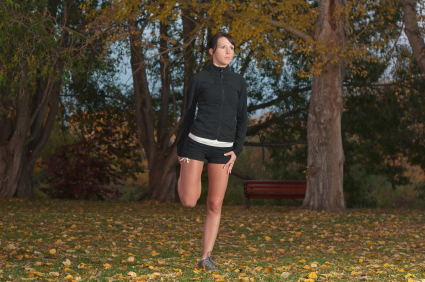Can you remember your mother or grandmother telling you to “stand up straight” when you were a kid? Well, like so many other things, we discover later in life they were right.
Good Posture is Exercise!
But your mother may not have realized that one of the easiest ways to get exercise throughout your day is to maintaining good posture when standing or walking.
Standing up straight not only makes you look confident and engaged. It also distributes weight evenly throughout your spine which keeps your back healthy, helps you burn additional calories, and activates more muscle groups than slouching.
Bad Posture can Sabotage the Good Effects of the Best Exercise Routine!
Studies are showing that people who stand up straight throughout their day are less prone to injury than those who slouch most of the day and are only conscious of posture while performing formal exercise routines.
That DOES NOT mean you should quit your exercise routine! What I’m saying is your 24/7 habits can sabotage all the hard work you put in during your exercise routine. A combination of strength training combined with good postural habits is the optimal recipe for building a healthy and toned physique.
No time or desire to formally strength train? Great news! You can get exercise from focusing on good posture while you are standing and/or walking.
Four Tips to Get More Exercise While Standing or Walking
1) Chest out! This is an easy cue and it will help you keep good posture. Gently squeeze between the shoulder blades and open your chest while standing or walking. If you feel any discomfort in your back, relax a bit. You may be over doing it.
2) Use reminders. Be aware of your posture when standing. If you notice you are slouching, use the chest out cue to correct your posture. In the fitness industry we call this 24/7 awareness.
Remember that it takes time to create new habits. In the beginning, leave yourself little notes in your car, office, and around your house to remind you to stand up straight. Over time it will become second nature to you.
3) Use your abs! There’s more to abs than just the six pack. Your abdominals are called stabilizers for a reason. They are there to help you stand up straight and support your back. By using them for their purpose, you can get a great ab workout and look more toned. This is a great way to incorporate strength training into your every day activities!
And, don’t be afraid to tighten them often throughout the day. Your abdominals are endurance muscles! They can handle it!
Not sure how to use your abs while standing? Watch this short video on how to engage your abdominals properly.
4) Rest! Part of the reason we slouch is because it’s easier! It’s work to stand up straight and activate your muscles properly. Take short rests throughout the day and sit down. If you find yourself overly fatigued or sore at the end of the day, then you may need longer rest periods.
When sitting or resting make sure you have back support and lean back against the chair. It’s best if the chair is tilted back slightly, rather than sitting straight up. This will give your muscles a chance to relax and take a break. If you can’t find a chair, lean with your back against a wall.
Using your muscles properly during lifestyle activity is one of the easiest ways to incorporate exercise into your day. It doesn’t take any extra time. It just takes a little practice!
Please let me know if this has been helpful to you or if you have any questions for me. I love to hear from you!
To your long term health and fitness!
Jennifer



